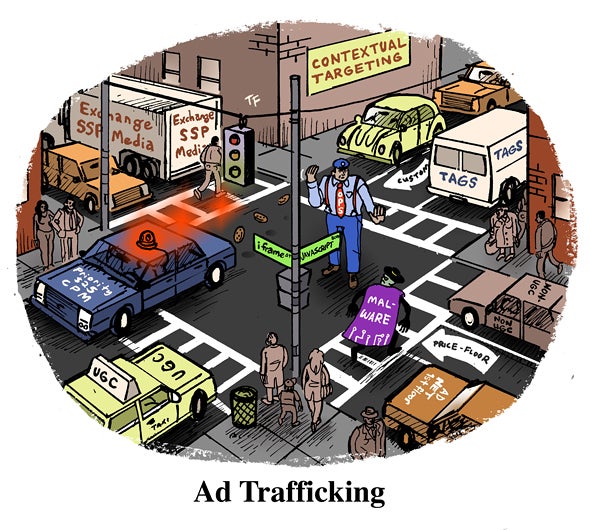The ad industry speculated a great deal about how The Trade Desk might put Sincera to use after its acquisition of the ad metadata and analytics startup in January.
We now have one indication of how Sincera will be put to use. TTD publicly announced OpenSincera on Tuesday. The free API integration posts ad impression data on publishers and tech vendors, such as how Sincera classifies certain formats or metrics, how many ads are on the page and refresh rates on those ads.
“We started working on it as soon as we joined The Trade Desk,” Sincera co-founder and CEO Mike O’Sullivan told AdExchanger. He said it could be a “crown jewel” for the team, in terms of information that the startup is able to provide to the entire ad ecosystem.
Sincere changes
OpenSincera is part of a major change in how Sincera operates.
Formerly, Sincera had a freemium product— a dashboard of data that offered a small slice of information. It was useful, but also a familiar marketing play to intrigue potential enterprise customers.
Sincera no longer has its own enterprise customers or a freemium version.
However, the new free portal is a far more useful tool, O’Sullivan noted. It’s a live feed of data that can be synced by API with programmatic tech, he said. It’s also meant to be used by stakeholders across the whole industry.
Agencies could use it to maintain and update blocklists, while publishers might understand how their own sites appear from the buy-side perspective. Advertisers would be surprised how often publishers may not even know the intricacies of what’s happening behind the ads on their page, O’Sullivan said. For instance, Sincera has spoken with publishers who believed they imposed a 30-second ad refresh minimum, but it turned out a vendor or ad overlay on the page was refreshing every 10 seconds.
“I have a lot of sympathy for publishers, because it’s not easy to understand the implications of a lot of these decisions,” he said. “Can you look at a square ad on a page and understand how many supply paths are connected to and bidding on it?”
The TTD logs
Sincera crawls vast troves of public and open-source web and app data. But it doesn’t have such a reliable feedback loop of actual online ad campaign results.
Working with an agency or tech platform, there’s often reluctance, if not outright antagonism, to the idea of providing an outside analytics vendor or consultancy a raw feed of campaign reporting data.
Sincera’s former enterprise customers might have wanted to understand in more detail how Sincera’s analytics related to their own metrics, and what was driving certain changes in the reporting, O’Sullivan said. But Sincera was “always a little bit at arm’s length” in those relationships, he said.
Under TTD, though, that trickle of advertiser data turns into a firehose.
Sincera now has only one enterprise customer – an internal stakeholder. But it gets to see all the campaign results info it needs on the platform.
The OpenSincera API should be useful for custom bidding algorithms startups, SSPs, DMPs and other DSPs, O’Sullivan said.
And TTD does benefit if Sincera “can raise the water line,” he added.
For instance, even just since joining TTD, Sincera has been able to improve what it formerly thought of as a “Goldilocks zone,” according to O’Sullivan. The company knew that metrics like ad impressions to content and minimum ad refresh rates were “lighthouse metrics,” he said. But after incorporating results from TTD helps to clarify exactly how those affect CPMs and campaign attribution.
If open programmatic improves overall, it “starts to turn the tide in ensuring that the open internet gets a proportional representation of ad spend,” he said. “Whereas today the walled gardens get a disproportional amount of investment versus the amount of time users are spending on those properties.”
















